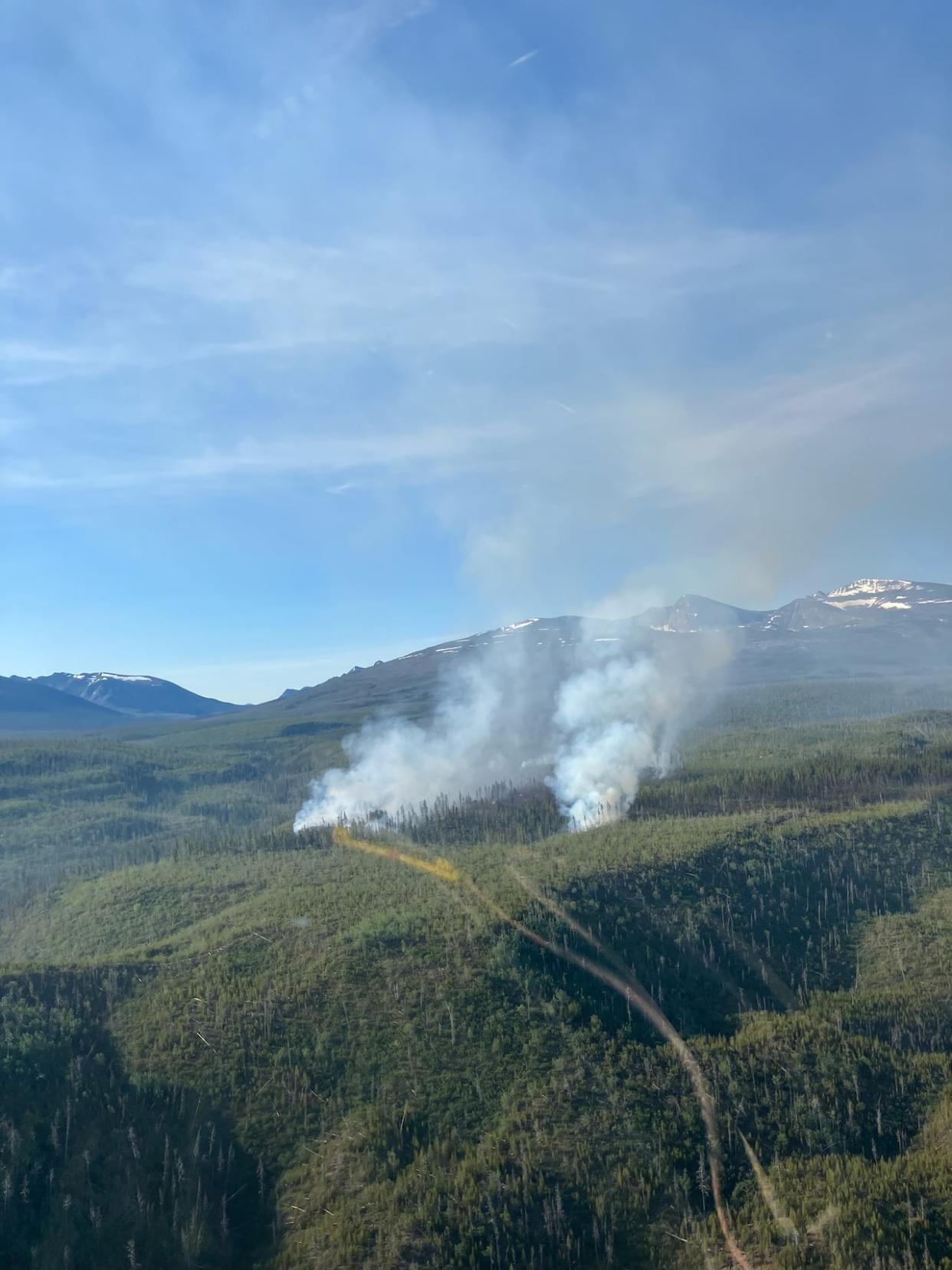Over 300 properties on alert as dozens of new B.C. wildfires burn

More than 300 properties have been placed under an evacuation alert near Dawson Creek, B.C., as hot weather creates prime conditions for new wildfire starts.
The Tupper Creek wildfire was discovered Tuesday and has grown to 1.2 square kilometres, roughly 20 kilometres south of Dawson Creek, near the B.C.-Alberta border.
About 305 civic addresses are covered by the alert, according to Peace River Regional District director Ryan Kirkham.
An alert means residents should be prepared to leave at a moment's notice should conditions worsen.
45 new fires sparked
As of Wednesday afternoon, there were more than 140 active wildfires in B.C., including 45 started in the past 24 hours. The day before, there were 98.
The service's map shows a cluster of about two dozen new fires sparked in the Cariboo region west of Quesnel. Environment Canada's forecast says Wednesday's temperature will peak at 31 C with a risk of a thunderstorm.
"After seven consecutive days of extreme heat, forest fuels are more susceptible to new wildfire starts," the B.C. Wildfire Service (BCWS) said in an update posted online.
A provincewide campfire ban will also take effect at noon on Friday, with Haida Gwaii as the sole exception.
The ban is being put into place because of the risk of increased wildfire, as a cold front is forecast to sweep across northern B.C., bringing strong winds, thunderstorms and the potential for dry lightning.
Alberta has also issued a fire ban covering much of the province's north and the eastern slope of the Rockies, with an evacuation order for the community of Garden River, located about 800 kilometres north of Edmonton, affecting roughly 700 people.
Fires visible from highways
There are two wildfires of note, meaning they are either highly visible or pose a threat to public safety, in northwestern B.C.
The BCWS says smoke from the 2.15-square-kilometre Little Oliver Creek fire will be visible from Highway 16 and the Terrace, B.C., area, while the 3.5-square-kilometre Hook Creek fire is burning out of control near the Yukon boundary and is visible from the Alaska Highway.
The service says the Hook Creek fire is burning in the footprint of a 2004 wildfire.
Highway 77 — a 138-kilometre road that starts just northwest of Fort Nelson and runs north to the Northwest Territories — closed due to a wildfire on Tuesday evening and didn't reopen until Wednesday afternoon.
In a 1 p.m. MST update, the traffic service said while the road has reopened, drivers should not stop due to the wildfire risk. Similar messaging has been given to motorists in other regions where smoke and wildfire are visible from roadways.
Personnel are constantly monitoring and assessing conditions, and resources are deployed to areas of highest risk, the BCWS said.
Meanwhile, an evacuation order remains in place for a community in northeastern B.C.
The Fort Nelson First Nation issued the order on Tuesday for the remote Kahntah Reserve, about 115 kilometres southeast of Fort Nelson. Residents and visitors were told to immediately leave by boat.

 Yahoo News
Yahoo News 
